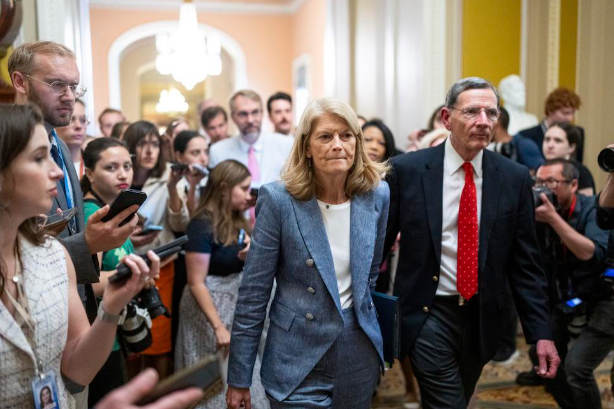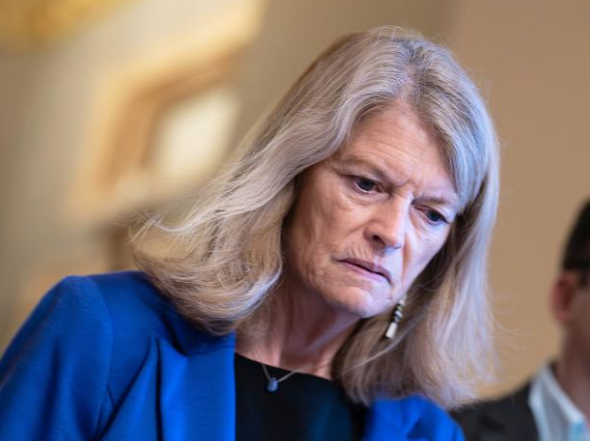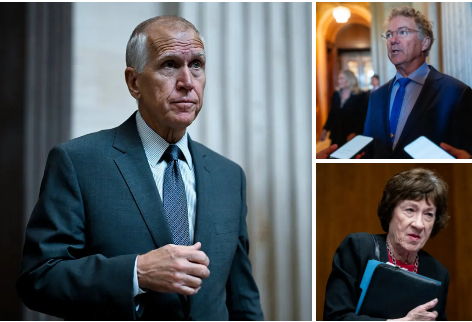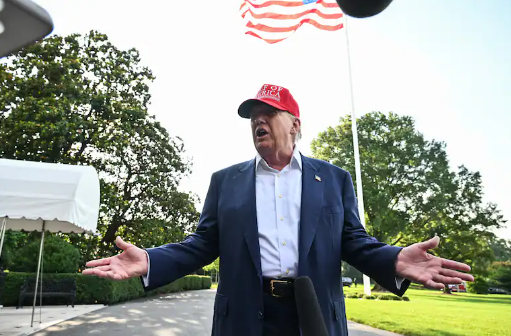Senate Passes Trump’s Tax & Spending Megabill—House Faces Deep Divisions

Washington, D.C. — In a razor-thin vote early Tuesday, the U.S. Senate passed a massive tax and spending bill backed by former President Donald Trump, sending the legislation to the House for final approval amid deep partisan divisions and growing concern over its budgetary impact.

The bill — informally known as the “One Big Beautiful Bill” — was approved 51-50, with Vice President JD Vance casting the tie-breaking vote. The 887-page legislation includes sweeping tax cuts, changes to healthcare and safety net programs, and major shifts in energy and immigration policy.
Senator Murkowski’s Key Role in Passage
Senator Lisa Murkowski (R-AK) played a pivotal role in the bill’s passage, securing targeted concessions for Alaska, including:
- A waiver from SNAP cost-sharing provisions for states with high payment error rates, benefiting Alaska and several large states like New York and Florida.
- A tax break for Alaskan fishing villages and whaling captains.
- Efforts to increase Medicaid funding for Alaska, although those provisions were ultimately struck from the final version.
Murkowski’s support helped push the bill over the finish line, though critics argue the concessions came at the cost of broader cuts to federal assistance programs.
Medicaid, SNAP, and Energy Cuts Raise Alarm
The bill includes significant reductions to Medicaid and SNAP (food stamps), which could reshape healthcare and nutrition access for millions of Americans:
- Nearly $1 trillion in permanent Medicaid reductions
- Revisions to SNAP that shift cost burdens to select states
- Deep spending cuts that some lawmakers say could strain the rural hospital system
An overnight amendment did boost funding for rural hospitals, doubling the fund from $25 billion to $50 billion—but that still falls short of offsetting the Medicaid cuts, according to healthcare advocates.
Green Energy Tax Credits Scaled Back
A revised “wraparound amendment” changed the structure of clean energy incentives:
- The proposed excise tax on solar and wind was dropped
- Projects starting within one year of the bill’s enactment can still qualify for tax credits
- Those credits must be used before 2027, and new eligibility rules ease restrictions on Chinese-made components
Despite the adjustments, the phaseout of renewable energy incentives remains steep—drawing concern from both environmental groups and industry stakeholders.
Tax Changes and Business Incentives
Other key tax-related components of the bill include:
- A permanent expansion of tax cuts for high earners
- An extended deduction for real estate investment trusts (REITs)
- Removal of a proposed tax on third-party litigation financing
Uncertainty Ahead in the House
The bill now heads to the House, where its fate is uncertain. Fiscal conservatives in the Freedom Caucus have criticized the bill for not doing enough to offset its estimated $3.3 trillion impact on the deficit, while moderate Republicans have voiced discomfort with the depth of the social program cuts.
Lawmakers like Reps. David Valadao (R-CA) and Jeff Van Drew (R-NJ) have signaled hesitancy, particularly over the long-term impacts on healthcare infrastructure and working families.
What’s Next?
The bill’s progress will now hinge on how the House balances competing demands from its conservative and moderate factions. With a deadline approaching and Trump’s support firmly behind the bill, political pressure is mounting on House leadership to deliver final passage ahead of the July 4th recess.


